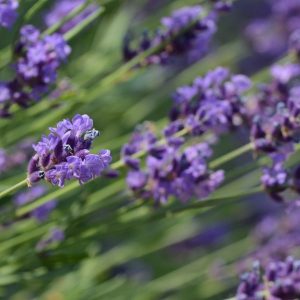Lady’s mantle is an herbal steeped in tradition and lore, with solid scientific evidence to support its use. The health benefits of lady’s mantle apply to everything from complaints of the female reproductive system to the liver, to skincare and anti-aging.
Lady’s Mantle (Alchemilla mollis, A. vulgaris)
Herbal Energetics: cool/dry
Therapeutic actions: alterative, anti-aging, anti-inflammatory, antimicrobial, antioxidant, astringent, coagulant, diuretic, emmenagogue, hepatic, hypoglycemic, hypotensive, lithotriptic, pro-collagen, vaso-dilator, vulnerary
Parts Used: leaf, flowering parts, root
Blessed lady’s mantle, with her cloak-like leaves that glisten with morning dew like diamonds. There is hardly a more poetic plant in the botanical realm.
Lady’s mantle is often referred to in the feminine. And, without a doubt, this plant does speak the “language” – species name “mollis” itself meaning “soft, effeminate, gentle” (another species name vulgaris means common, not to be confused with more presently accepted use of the term vulgar for lewd or foul). Achemilla lends itself deeper into lore and tradition, used by alchemists as a catalyst in their attempt to transform base metals into gold. For our sweet lady’s mantle has intrigued and fascinated people for ages and her lore is connected to youth, vitality and fertility, to protecting one’s home from nature’s wrath, even to the Virgin Mary herself.
Lady’s mantle is far from the showiest plant in the medicinal herb garden, instead it is a plant that captures hearts and imaginations of herbalist’s and gardeners alike.
Health Benefits of Lady’s Mantle
There is a lot to be learned in a name — and to a great extent, lady’s mantle is largely viewed as a herb to promote women’s health. Alchemilla is considered a great tonic for the female reproductive system – bringing balance and health. Like yarrow, this herb acts in complex and seemingly contradictory ways. For example, it can be used to both stimulate menstrual flow and reduce excessive menstrual flow. This herb can achieve these disparate goals by encouraging balance and restoring health to the reproductive tract. It is often used to reduce excessive vaginal discharge (leucorrhea) when used as a douche, while also helping to reduce heat and itching. It can also be used to reduce PMS symptoms, cramping and menopausal complaints such as hot flashes and mood swings.
But lady’s mantle health benefits don’t stop at the female reproductive system. It is a wonderful wound herb as it helps to curtail bleeding, reduce the risk of infection, and promote the growth of new healthy tissue. Furthermore, alchemilla supports skin health and vitality by mitigating the effects of UVB damage and inhibiting the enzymes that break down collagen which causes visible signs of aging such as wrinkles and loss of firmness.
As an cooling astringent, lady’s mantle can ease discomfort and heat associated with mouth ulcers, GERD, and diarrhea. I think of alchemilla when there are complaints of excessive phlegm in the GI tract that cause persistent cough and loose stools. It is also an effective gargle for sore throats.
Moderate use use of this herb also promotes good liver health. I would suggest this herb when there are complaints of hormonal imbalance, heat, and skin that is prone to cystic breakout, itchiness and redness – as those are often signs of a stressed liver. It is also considered a gentle herb to ease high blood pressure and agitation.
Furthermore, lady’s mantle promotes urinary and renal health by encouraging full bladder elimination. It may also reduce the size and severity of kidney stones, or help prevent their formation altogether.
Lady’s Mantle Identification
Lady’s mantle is fairly easy to identify. While not a common wild herb in North America, it is a beloved garden perennial. Palmately lobed (A. mollis, A. vulgaris) to deeply dissected (A. alpina) leaves arise in shades of green to green-ish yellow in a basal rosette and form dense mounds. Leaves have scalloped margins and are kidney bean to semi-circular in shape. These leaves collect morning dew, which remains long after most the dew has dried elsewhere. Flower spikes of light green flowers appear June through September.
All parts of lady’s mantle are useful in herbal medicine (woody rhizome, leaves, and flowering tops). Harvest leaves and flowering tops just as flowering begins; roots are best harvested in fall.
Learn about how to grow lady’s mantle in your garden here.
How to Grow Lady’s Mantle for Herbal Medicine & Garden Beauty
Dosage, Safety & Precautions
Lady’s mantle can be consumed in the form of tea, infusion, decoction (root), or tincture (read more about how to make a tincture here). Commonly accepted dosages are 2-4 grams or two teaspoons of dried herb as a tea or infusion, or 2-4mls tincture up to 3x daily. For concerns of diarrhea and excessive discharge, a stronger decoction can be prepared by simmering the herb (preferably root) for 10-20 minutes; this can be cooled, strained and consumed, or used as a gargle or douche.
FDA Disclosure
I am a trained herbalist with a degree in Complementary and Alternative Medicine, I am not, however, a doctor. Posts in this blog are for informational purposes only and should not be construed as medical advice. Before using any herbs, check for appropriate dosage, drug interactions, and contraindications. Information contained herein is not intended to treat, diagnose, cure or prescribe. Please consult your primary care physician regarding your specific health concerns.
Lady’s mantle is largely considered safe and gentle within the herbal community. Do not take if you are pregnant, trying to become pregnant or nursing. Do not take if you are diabetic, or taking coagulant or anti-coagulant medications. There is some evidence to suggest that excessive consumption of lady’s mantle may contribute to liver damage. Please consult your physician before taking this or any other herb, especially if you are currently taking medication or a chronic illness.
Resources:
Hoffmann, D. (2003). Medical herbalism: The science and practice of herbal medicine. Rochester, VT: Healing Arts Press.
Hwang, E., Ngo, H. T., Seo, S. A., Park, B., Zhang, M., & Yi, T. (2018). Protective effect of dietary Alchemilla mollis on UVB-irradiated premature skin aging through regulation of transcription factor NFATc1 and Nrf2/ARE pathways. Phytomedicine,39, 125-136. doi:10.1016/j.phymed.2017.12.025
Karatoprak, G. Ş, Ilgün, S., & Koşar, M. (2017). Phenolic Composition, Anti-Inflammatory, Antioxidant, and Antimicrobial Activities of Alchemilla mollis (Buser) Rothm. Chemistry & Biodiversity,14(9). doi:10.1002/cbdv.201700150
Mandrone, M., Coqueiro, A., Poli, F., Antognoni, F., & Choi, Y. (2018). Identification of a Collagenase-Inhibiting Flavonoid from Alchemilla vulgaris Using NMR-Based Metabolomics. Planta Medica,84(12/13), 941-946. doi:10.1055/a-0630-2079
Ozbek, H., Acikara, O. B., Keskin, I., Kirmizi, N. I., Ozbilgin, S., Oz, B. E., . . . Saltan, G. (2017). Evaluation of hepatoprotective and antidiabetic activity of Alchemilla mollis. Biomedicine & Pharmacotherapy,86, 172-176. doi:10.1016/j.biopha.2016.12.005
Takir, S., Altun, I., Sezgi, B., Suzgec-Selcuk, S., Mat, A., & Uydes-Dogan, B. (2015). Vasorelaxant and blood pressure lowering effects of alchemilla vulgaris: A comparative study of methanol and aqueous extracts. Pharmacognosy Magazine,11(41), 163. doi:10.4103/0973-1296.149733





































1 Comment
I just learned about this plant and it’s benefits. Lucky for me, I grow alot of this in my back yard. We are now in August, is it too late to harvest the leaves?